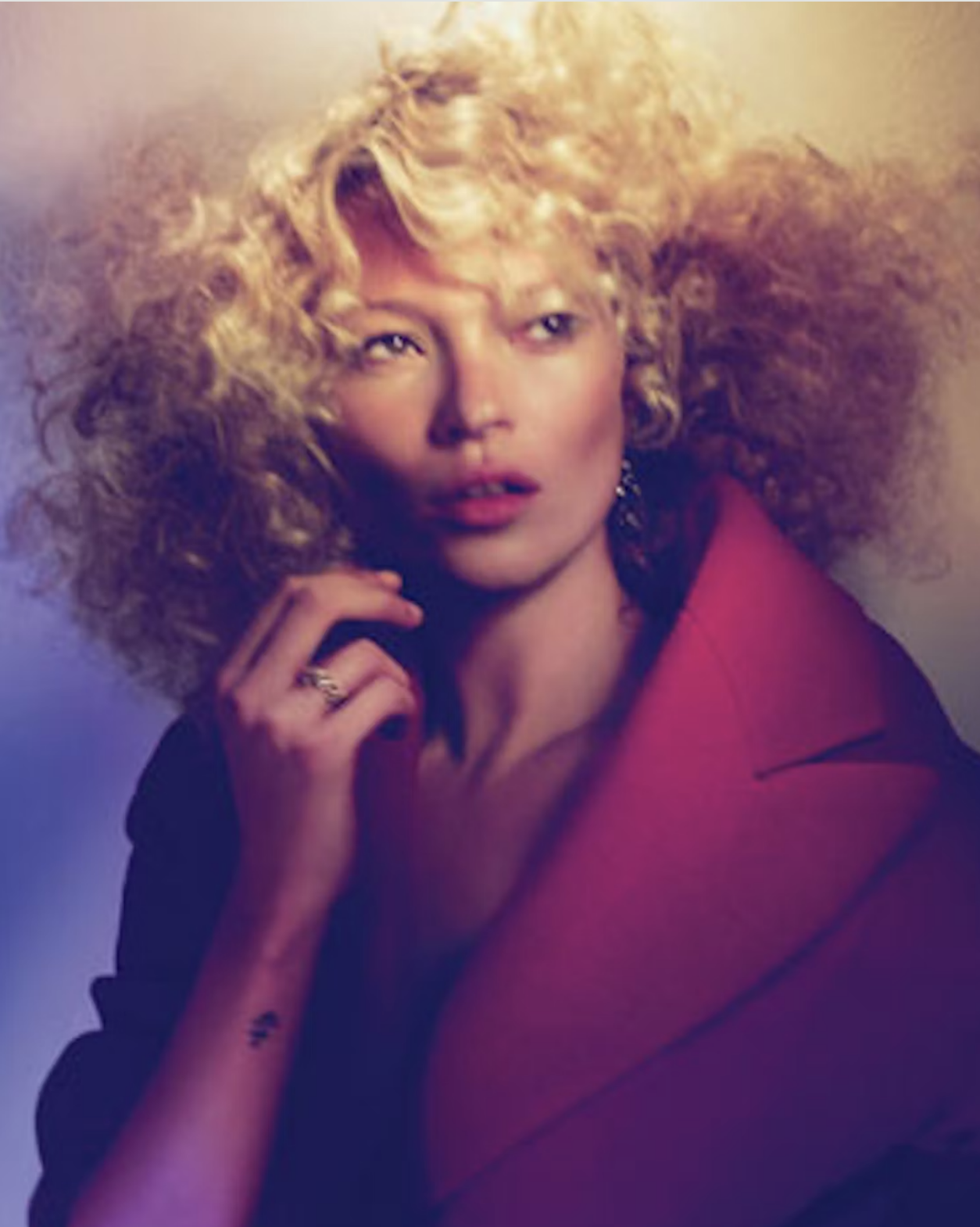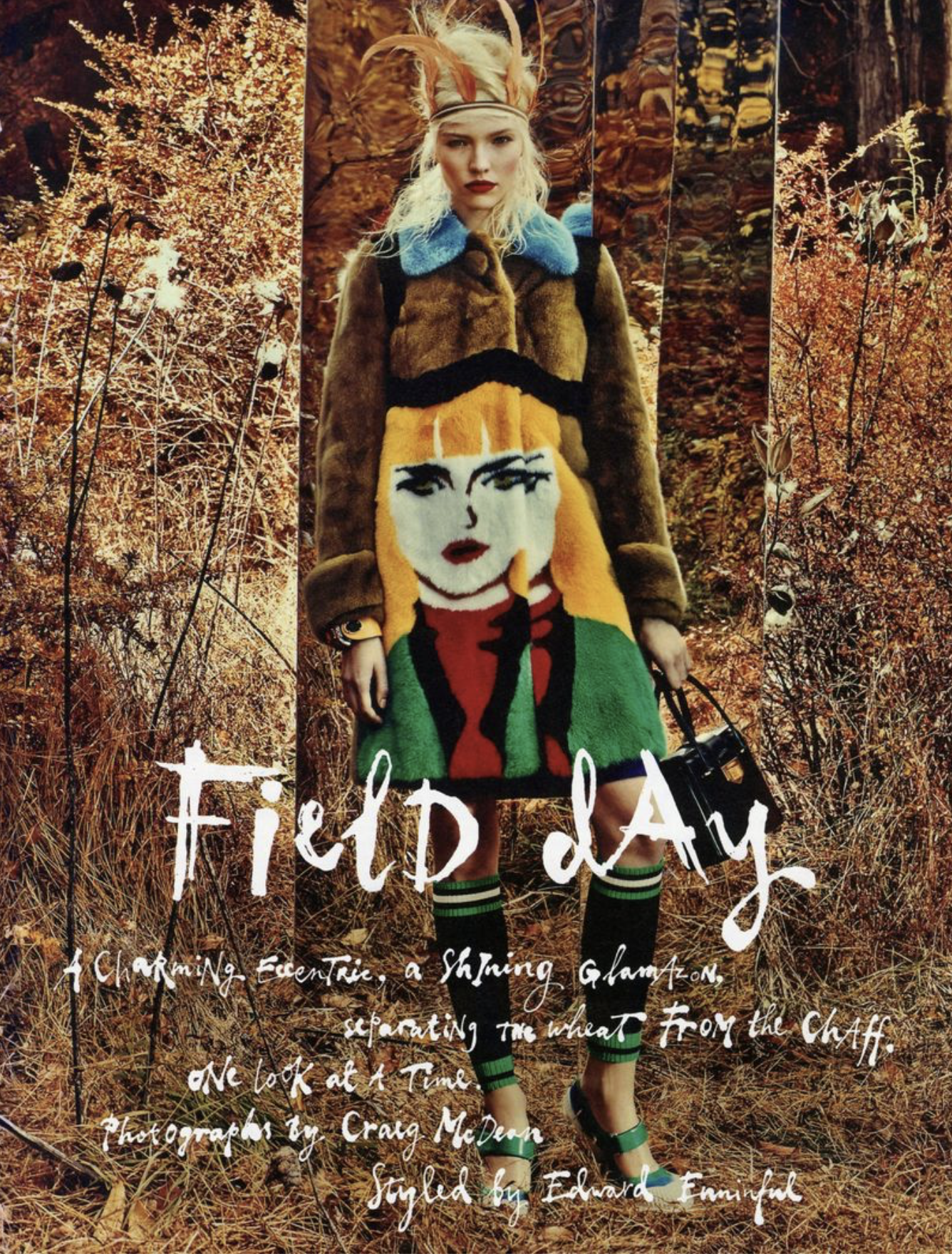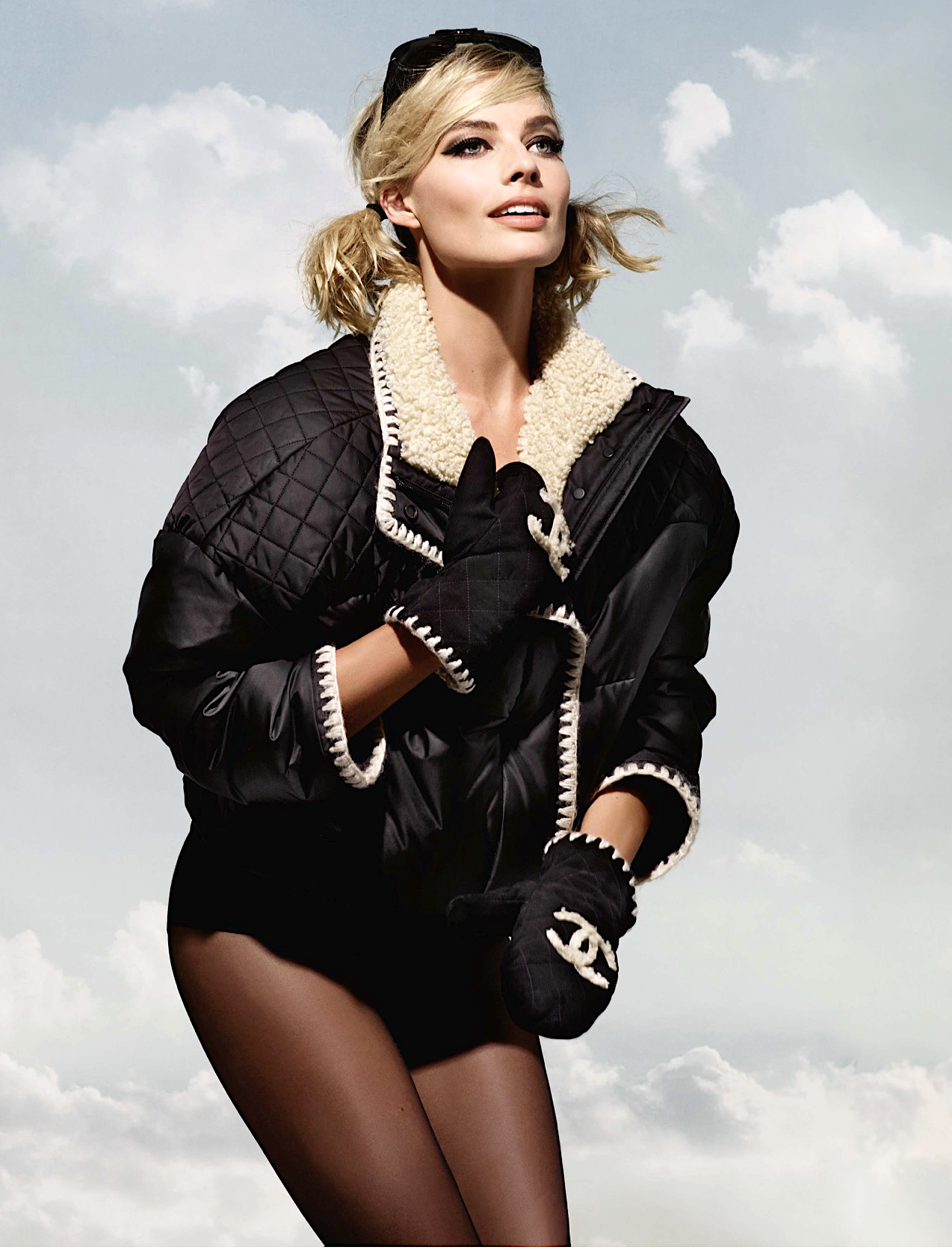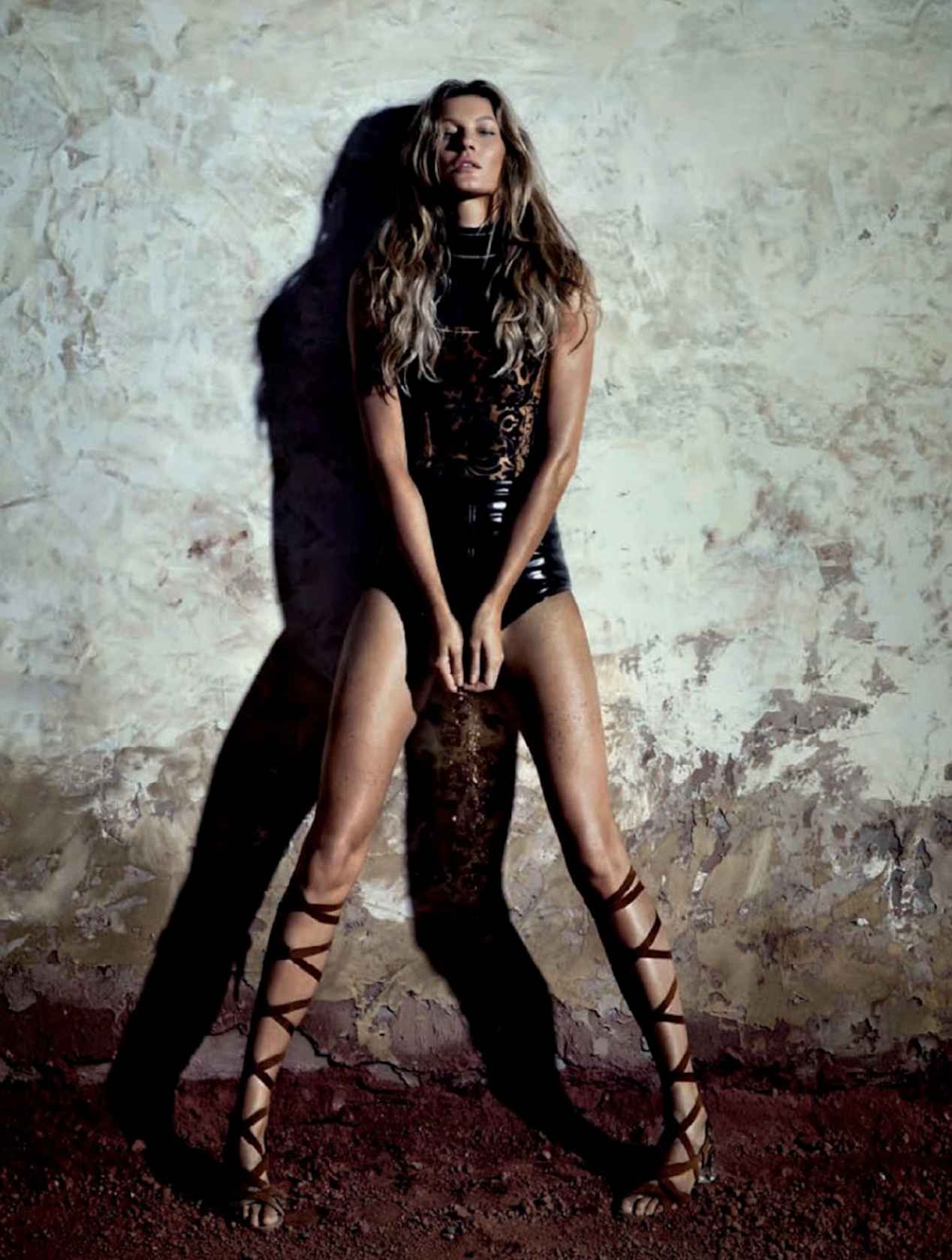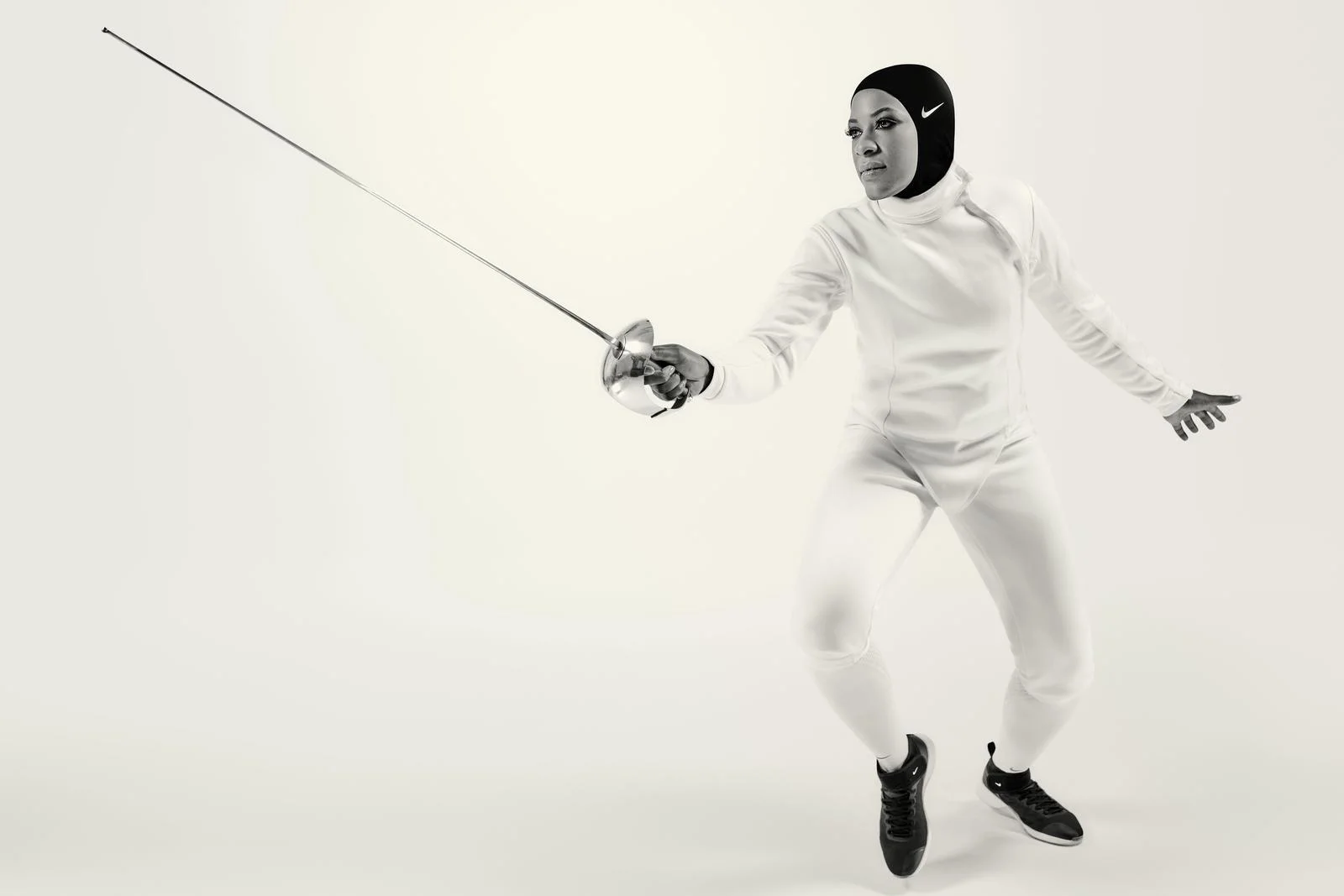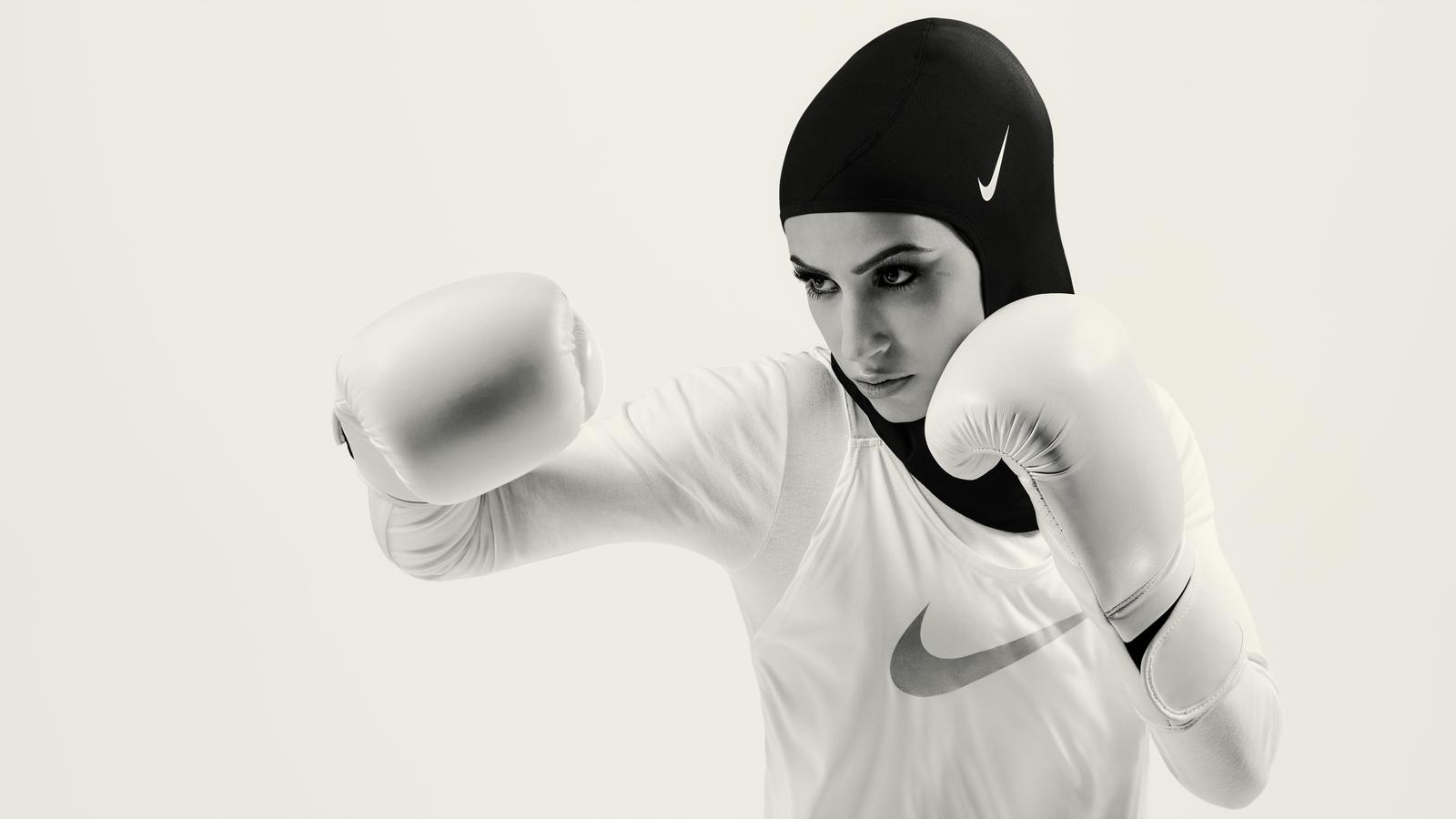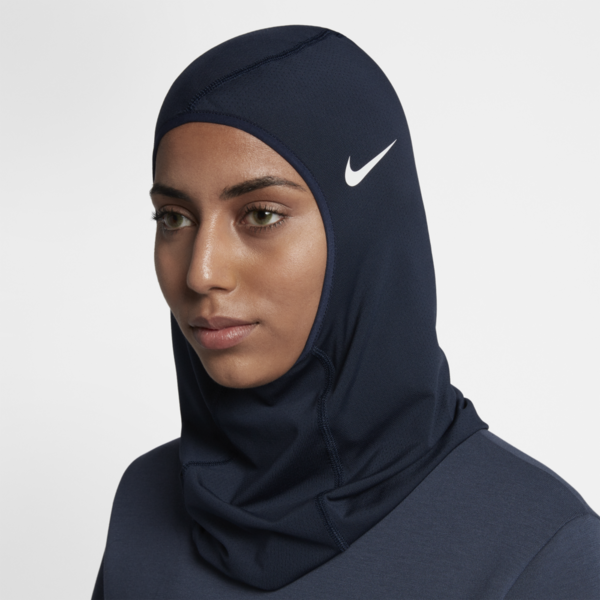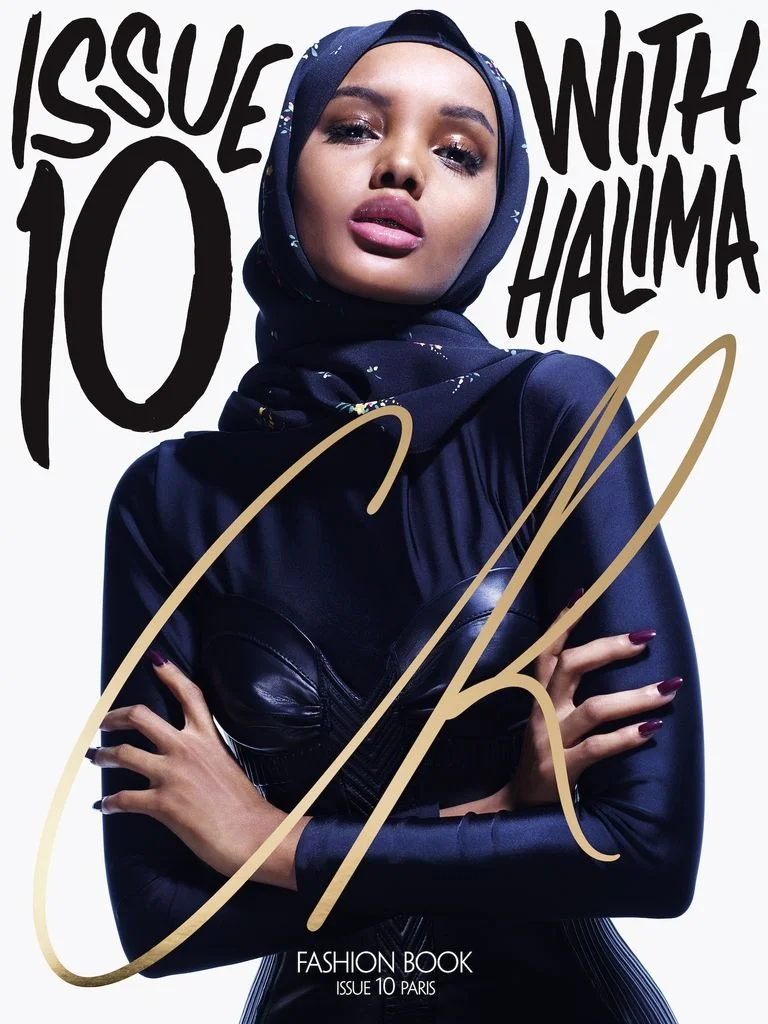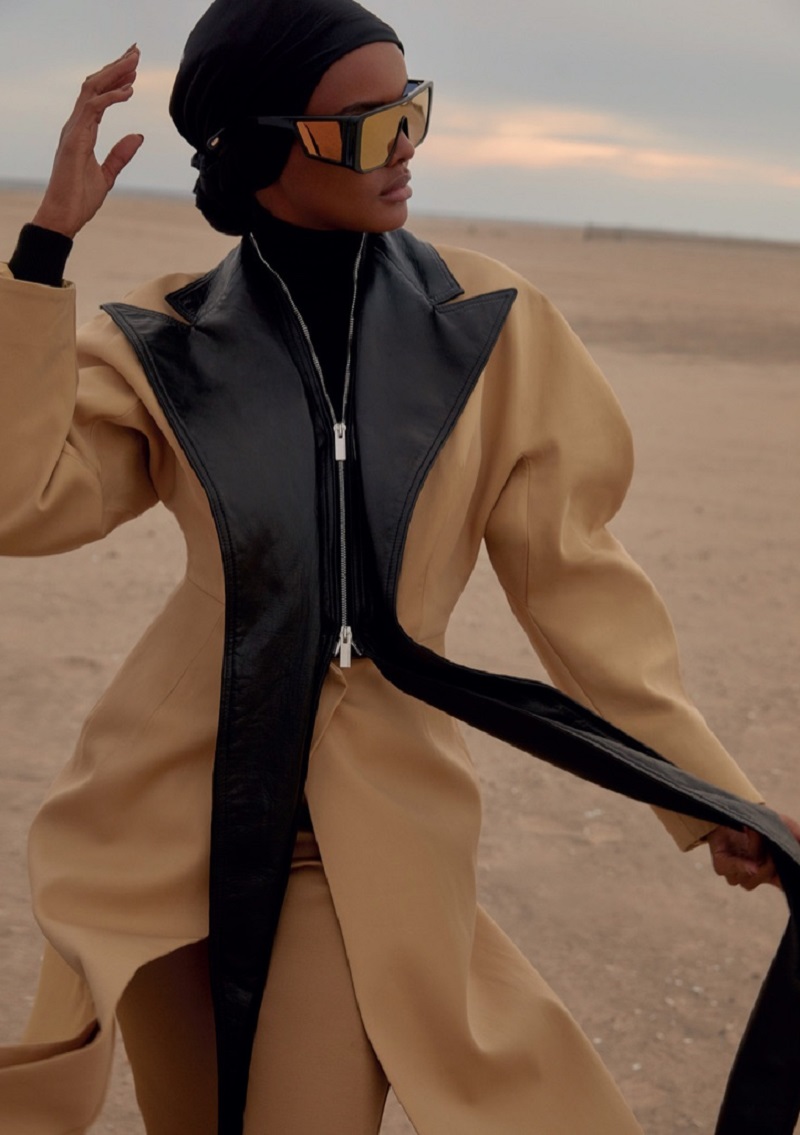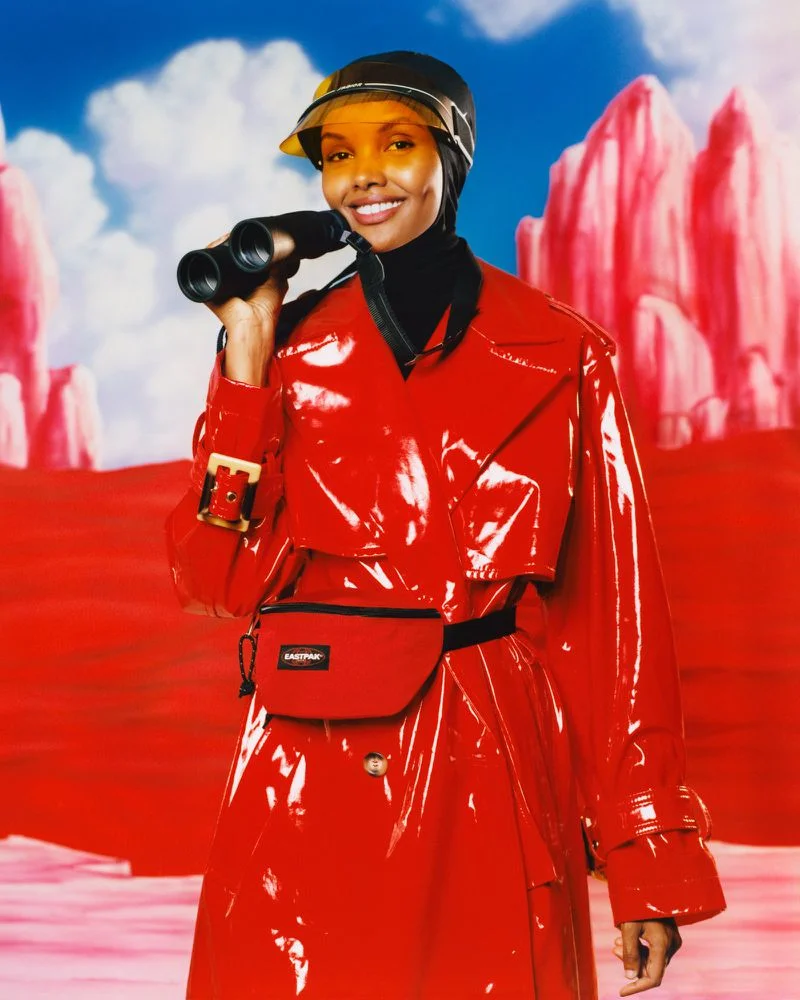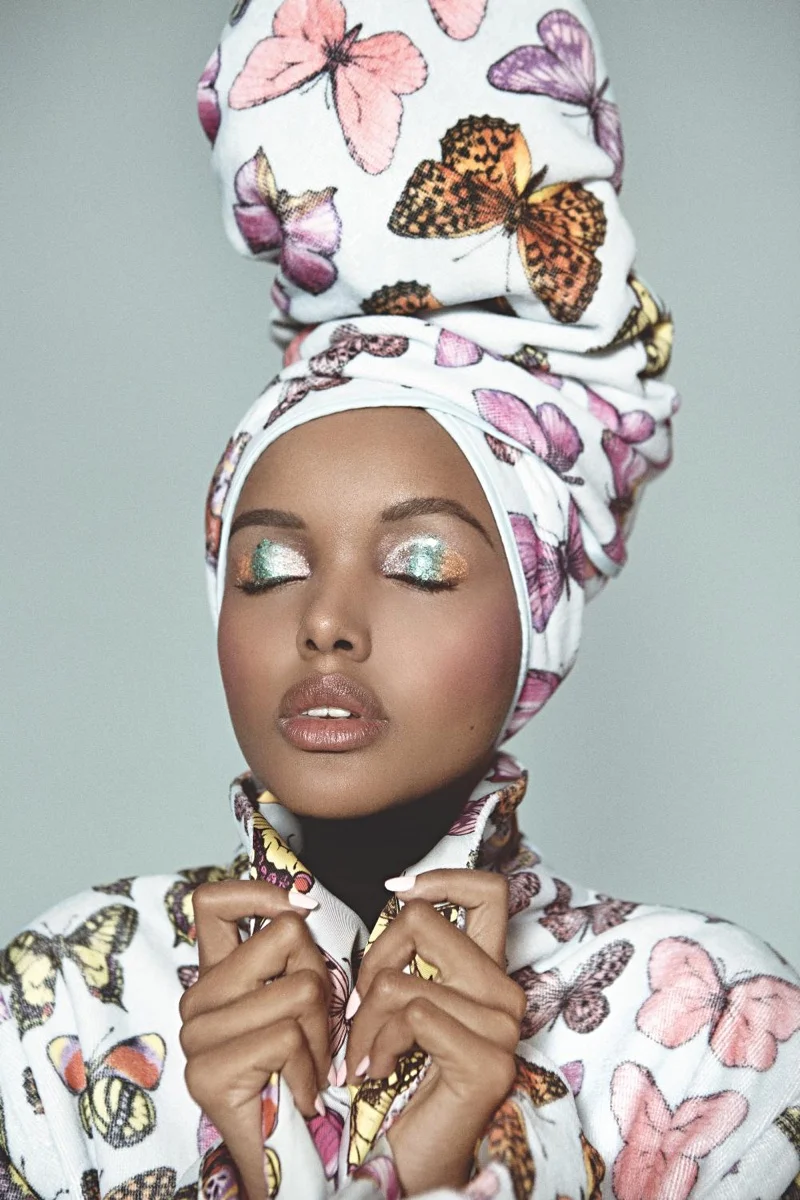Eye: Carine Roitfeld & Halima Aden Talk Modesty, Provocation & The New Nike Pro Hijab
/Nike athlete and champion fencer Ibtihaj Muhammad in the Nike Pro Hijab
New Jersey-native Ibtihaj Muhammad, a Nike athlete and champion fencer, knows what it is to be carded for false starting many times. “First, I’d get a warning and then a point against me…I can’t tell you how many times that happened,” she says. “And I’d tell the referee, ‘Oh, I’m sorry, I couldn't hear you.'”
Muhammad, who earned a bronze medal in Rio in 2016 for Team USA, wasn't dishing bs to the judge. The star athlete typically competed in a children’s hijab that was made of a doubled georgette material. “When the material is wet, it gets really heavy and stiff,” she says, describing what it felt like to sweat with her hijab on. “It would completely obstruct my hearing.”
Just dealing with keeping her hijab in place was frustrating for Muhammad. Her hijab tied in the back, leaving her to pin the front portion under her chin, before tucking the extra fabric under her sports bra straps so it would stay in place under her mask. “I know that's hard to envision, but that's what I wore for literally my entire athletic career,” she says.
It's no exaggeration to say that her hajib has been a major source of stress in Muhammad's training. “I remember I only had a few that I used for training and hadn't been able to find that particular style anymore," says Muhammad. On top of that, hijabs weren't fully understood. “When I was in school, I always had to have a letter from a local imam that said that it was safe for me to wear my religious covering during sport," she says. "My coaches had to have that with them at all times."
Nike's response to the hijab challenge was a serious one. After all, their logo endorsing the new hijab's functionality and performance is critical. Nike explains:
The designers gave that initial prototype to a variety of athletes, including weightlifter Amna Al Haddad and figure skater Zahra Lari, both from the United Arab Emirates, to put the garment to the test in their respective sports. Everyday athletes from around the Middle East, including runners like Manal Rostom, a Nike Run Club Coach in Dubai, and Zeina Nassar, a German boxer, also assessed the hijabs. Nike gathered both the athletes’ performance feedback and their reactions to the garment’s appearance.
The designers gave that initial prototype to a variety of athletes, including weightlifter Amna Al Haddad and figure skater Zahra Lari, both from the United Arab Emirates, to put the garment to the test in their respective sports. Everyday athletes from around the Middle East, including runners like Manal Rostom, a Nike Run Club Coach in Dubai, and Zeina Nassar, a German boxer, also assessed the hijabs. Nike gathered both the athletes’ performance feedback and their reactions to the garment’s appearance.
Designers responded to the athletes' request for an even lighter, softer and more breathable garment -- and also a more inconspicuous one designed to fit a range of head sizes and even face shapes. As a result, Nike made a commitment that runs contrary to most manufacturers: they added individualized SKUs and abandoned an adjustment that added weight and awareness of the hijab to the wearer. The Nike Pro Hijab was becoming a high-performance garment designed to liberate the full-potential of its athletes.
Muhammad first experienced the Nike Pro Hijab shortly after that in August 2017. “It really sunk in how much my previous hijab was hindering my performance when I tried the Nike Pro Hijab,” says Muhammad. “Suddenly, I could hear, I wasn’t as hot and it felt like my body was able to cool itself down better and faster.”
That’s a long way from having trouble finding a suitable hijab and having to explain and defend herself to officials. “The Nike Pro Hijab will help advance the conversation around hijabs and Muslim women in sports and further make sports an inclusive space,” says Muhammad.
She is not alone in this thought. For many hijabi athletes, the Nike Pro Hijab is so much more than a performance garment. “It inspires me to reach greater heights and to run farther distances,” says Rostom, who recently completed the New York Marathon in the Nike Pro Hijab. “And I believe it’s going to inspire girls worldwide to follow their passion for sport.”
For Lari, the Pro Hijab is a symbol of empowerment. "It's a reminder to us Muslim women that we can achieve anything in the world," she says. "What Nike has done for Muslim athletes is a dream that we never thought would happen."
The Nike Pro Hijab is available December 1 in black and obsidian on nike.com and at select retailers in Europe, North Africa, North America and across the Middle East. Other colorways, including white and vast gray, will launch in January on nike.com and at select retailers in more than 20 countries.
Carine Roitfeld and Halima Aden Talk Modesty and Provocation
Carine Roitfeld joined model Halima Aden for a conversation about modest dressing at the Business of Fashion's annual Voices conference last week.
Aden was born in a Kenyan refugee camp and later naturalized as an American when her family moved to St. Cloud, Minnesota when she was seven years old. Aden first made headlines as a teen when she became her American town's first Muslim homecoming queen. After competing in the state's Miss USA pageant in 2016, she caught Carine's eye, and, a year later—at 19 years of age— Halima Aden covered CR Fashion Book Issue 10. Equally exciting, Halima was interviewed by her life-inspiring role model Imam.
Halima Aden aspires to be a UN Goodwill Ambassador. Until then, listen to Carine Roitfeld, Halima Aden and Tim Blanks discuss modesty at the BofF VOICES 2017 conference.
